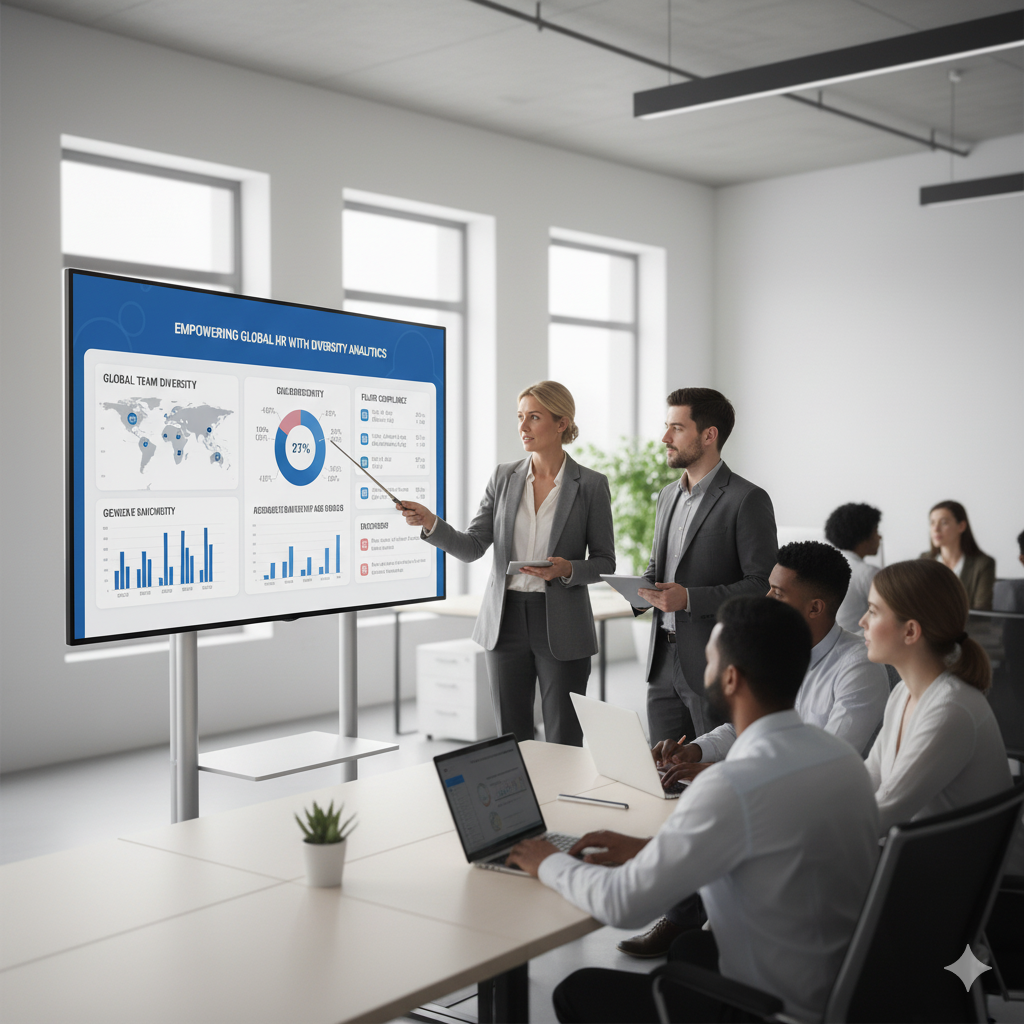In today’s dynamic workplace, understanding the age composition of your workforce is key to strategic planning and effective talent management. With Workforce Age Analytics in HRIS, HR teams can go beyond basic employee data — transforming raw numbers into actionable insights that support smarter decisions, improved engagement, and long-term workforce sustainability.
Let’s explore how HRIS dashboards and graph analytics can help HR professionals visualize and analyze age demographics, bridging the gap between data and decision-making.
What Is Workforce Age Analytics?
Workforce Age Analytics refers to the process of collecting, visualizing, and interpreting employee age data within an organization — typically through an HRIS (Human Resource Information System).
This feature enables HR teams to:
- Analyze the distribution of age groups across departments or job levels
- Identify trends and gaps in generational representation
- Support succession planning and retention strategies
- Align HR initiatives with demographic realities
By using the HRIS Graph Analytics Dashboard, organizations can instantly view workforce age composition and use it to enhance policy-making, recruitment, and workforce development.
How HRIS Graph Analytics Work for Age Data
The HRIS Graph Analytics module transforms age-related data into easy-to-read visualizations — such as bar graphs, pie charts, or trend lines — that display how different age groups are represented within your company.
For example:
The dashboard might show that 45% of your workforce is aged 25–34,
30% is aged 35–44, and
10% is above 55 — insights that can significantly inform planning for training, succession, or retirement.
These visuals allow HR professionals to see the story behind the data at a glance.
Why Workforce Age Analytics Matter
| Area | How Age Analytics Helps |
| 🎯 Recruitment Planning | Identify which age groups are underrepresented and target recruitment accordingly. |
| 📚 Training & Development | Design programs tailored to generational learning preferences. |
| 👥 Succession Planning | Prepare for retirements by identifying skill gaps and future leaders early. |
| 🧠 Employee Engagement | Understand generational motivations and adapt engagement strategies. |
| 📅 Workforce Forecasting | Predict workforce shifts and plan for future staffing needs. |
Key Features of Age Analytics in HRIS Dashboards
- Age Group Graphs
Interactive charts that show how your workforce is divided by age range — instantly highlighting generational balance. - Department-Level Analysis
View age demographics within departments or job roles to understand where generational gaps exist. - Trend Over Time
Track changes in workforce age distribution year by year to forecast demographic shifts. - Custom Filters
Filter by job role, location, employment status, or department to uncover deeper insights. - Exportable Reports
Easily generate visual reports for management meetings or compliance documentation.
From Data to Action: Turning Insights into Strategy
Having age analytics is valuable — but using them effectively is where real transformation happens. Here’s how HR teams can apply these insights:
- Balance Generational Representation:
Ensure a healthy mix of younger and more experienced employees for innovation and mentorship. - Optimize Career Pathways:
Align learning and development opportunities based on the needs of each age group. - Forecast Retirement Waves:
Identify employees nearing retirement to plan replacements and knowledge transfer. - Promote Inclusivity:
Develop policies that accommodate all age groups, ensuring fairness and engagement across the workforce.
Real-World Example
A manufacturing firm used Workforce Age Analytics in their HRIS and discovered that 60% of its skilled technicians were aged 50 and above. By acting on this insight, HR initiated:
- Targeted recruitment for younger technicians
- A mentorship program pairing senior experts with new hires
- Training to preserve institutional knowledge
Within a year, the company achieved a balanced age distribution and improved operational resilience.
Conclusion
The Workforce Age Analytics in HRIS Dashboards turn complex employee data into clear, actionable insights. By visualizing age demographics, HR teams can anticipate change, plan smarter, and build a balanced, future-ready workforce.
From recruitment to succession planning, the right data visualization empowers organizations to make strategic decisions grounded in evidence — not assumptions.

